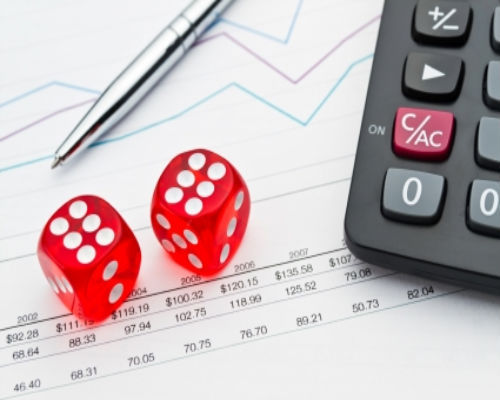How many investors are actually aware of the strength of their investment portfolio? Normally a particular individual investor is master of one investment option, be it insurance, debt or equity. He is not quite comfortable with other investment options because of various reasons. Maybe he is young and his risk appetite is high, so he prefers equity investments and therefore tries to master it. Maybe he is more interested in insurance products because of family commitments. There can be `n’ number of such examples.
Investment portfolio of such investors is generally inclined towards an option which he thinks best suits him. However, in doing so one ignores a very basic fact i.e. being too aggressive will take away your hard earned money in bad times and being too defensive while building a portfolio will stop you from making money even in good times. So what should be the right approach so that you get optimum returns from your portfolio without taking too much risk? In this article we try to learn about the parameters, which should be kept in mind while choosing investment options and how to build a balanced portfolio.
Balanced Portfolio is not a constant
A portfolio is considered balanced if it can withstand the pressure of rough market conditions. Balanced portfolio is not a universal constant. Definition of a balanced portfolio is directly correlated to the situation and need of an investor. A portfolio, which is balanced for X might not be balanced enough for Y as the commitment, situation and needs might be quite different for both. Before building a portfolio one must take into consideration the risk profile, expected return, economic condition, inflation and available investment options.
Before Starting
Building a balanced portfolio is an art and to master it one should be aware of the basics. First rule of the game is gauging the risk tolerance which will ultimately help you in allocating assets towards various investment options. Factors which generally govern your risk tolerance are age, current income and expected growth, current and anticipated financial commitments and the tax bracket you fall into. Please refer to the table below to figure out your risk tolerance:
| Characteristics | Situation | Risk Tolerance |
| Age | Young | High |
| Old | Low | |
| Current/Future Income | Good/Increasing | High |
| Normal/Stable | Low | |
| Financial Commitments(Marriage, Planning for Children, Medical) | No | High |
| Yes | Low | |
| Tax Bracket | Lower | High |
| Higher | Low |
Building It
A balanced portfolio has the following characteristics.
1. Shields against worst case scenario
2. Constant cash flow
2. Potential of Capital Preservation
3. Potential of Capital Appreciation
4. Requires Minimum Monitoring
As you have researched your risk profile, expected return and economic condition by now, let’s start building the actual portfolio using all the available investment options.
Insurance – Shields against worst case scenario
Buying insurance should be the very first option, which one should consider as this is the instrument which acts as the savior in nightmarish situations (Casualty, Theft, Liability, Health and Death etc). It also helps in mitigating the tax daemon if chosen prudently.You can buy Life Insurance, General Insurance or can take an exposure using the ULIP route. ULIP’s (Unit Link Investment Plan) are a combination of mutual funds and insurance offered by various life insurance companies.
Debt Investment – Constant cash flow and Capital Preservation
Every investor needs constant cash flow as there are some basic requirements which need to be fulfilled. Investing in debt instruments provides a constant source of income. If you are watchful and invest round peak of the interest rate cycle you can very well fight inflation too. In times of economic downturn where other investment options are not generating returns, shifting to debt investment will help in capital preservation plus constant cash flow. The options available here are investments in Fixed Deposit, Public Provided Fund, KVP, NSC and infrastructure bonds.
Equity Investment/Real Estate/Land – Capital Appreciation
By investing in Insurance and debt instruments you are prepared to face the storm. It will keep you rock steady during emergencies but once the bad phase is over your portfolio value will still remain the same. To reap the benefits in good market conditions you need to invest in instruments like equity and mutual funds which grow with the economy and generate returns, which are way above debt investment returns. The investment options available here are individual stocks, mutual funds, Equity linked saving schemes (ELSS – These provide tax benefits too), ETFs, commodities and gold.
If you want to reduce the monitoring effort and you have a long term investment horizon you can invest in real estate and land too.
Mastering the art
All said and done if you want to create a really stable portfolio, it is a really good idea to make an effort to learn all you can about the various techniques of investing and all the available investment options. Here, it really pays to be Jack of all trades and master of none.

Nice article!